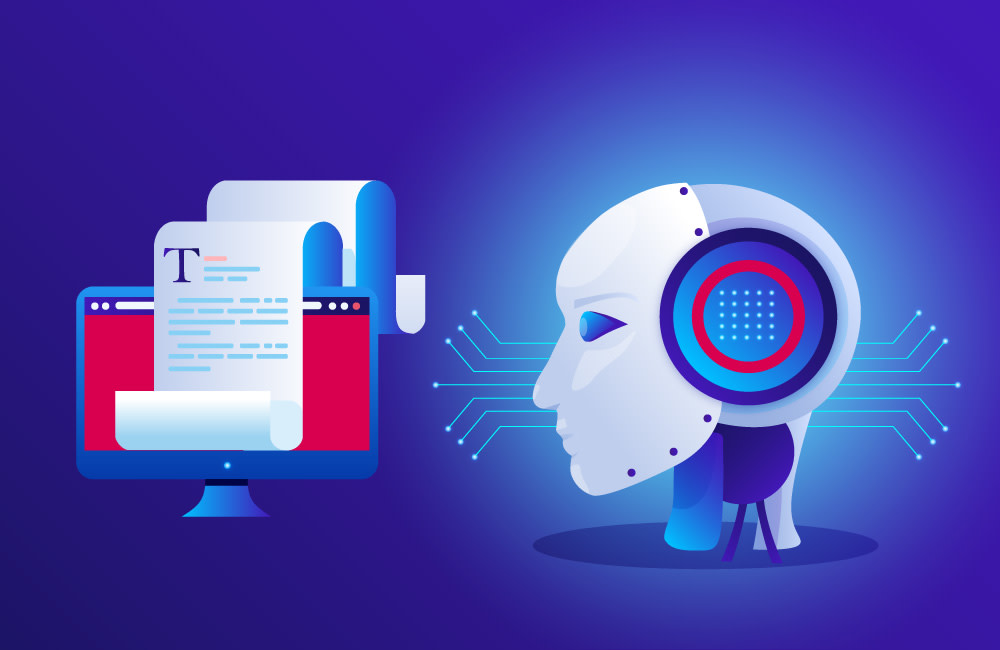In the ever-evolving world of digital marketing, content is still king. However, consistently producing high-quality content can be time-consuming and resource-intensive. This is where AI-powered content generation tools come into play. These tools are transforming the way businesses create, optimize, and scale their content efforts. From automating blog writing to generating social media posts, AI tools can enhance productivity while maintaining creativity and relevance.
In this blog, we’ll explore how to use AI tools for content generation, their benefits, and tips for integrating them into your content strategy.

1. What Are AI Content Generation Tools?
AI content generation tools use natural language processing (NLP) and machine learning algorithms to generate written content based on specific prompts, guidelines, or templates. These tools can create various types of content, including:
- Blog posts
- Social media updates
- Product descriptions
- Email newsletters
- Website copy
By analyzing data and learning from vast amounts of information, AI-powered tools can mimic human writing styles, making them a valuable asset for marketers, writers, and businesses.
2. Benefits of AI Tools for Content Generation
Using AI tools for content creation offers several advantages:
a. Time Efficiency
One of the biggest benefits of AI-powered tools is the ability to quickly generate large amounts of content. Tasks that would take hours for a human writer can be completed in minutes, allowing you to focus on strategy and other high-priority tasks.
b. Consistency
AI tools ensure consistency in tone, structure, and style across multiple pieces of content. This is especially useful for businesses that need to maintain a uniform brand voice across different channels.
c. Scalability
Whether you need a single blog post or hundreds of product descriptions, AI content generation tools make it easy to scale your content production to meet growing demands.
d. SEO Optimization
Many AI tools are equipped with SEO optimization features, ensuring that the content generated is optimized for search engines. This can help improve your website’s rankings and organic traffic without requiring extensive manual keyword research.
e. Cost Savings
Using AI tools can significantly reduce the cost of hiring multiple content writers. While these tools aren’t meant to completely replace human creativity, they can handle bulk content generation, reducing the need for external writing resources.
3. Popular AI Tools for Content Generation
Several AI-powered content generation tools have gained popularity in recent years, each with unique features tailored to different needs:
a. OpenAI’s GPT (Generative Pre-trained Transformer)
Tools like GPT-4 (used by platforms like ChatGPT) are capable of generating long-form blog posts, product descriptions, emails, and even complex marketing copy. GPT models use deep learning to predict and generate human-like text based on the input prompt.
b. Copy.ai
Copy.ai specializes in creating marketing content such as product descriptions, ads, and email copy. It’s easy to use and allows you to generate professional content quickly by inputting simple instructions.
c. Jasper (formerly Jarvis)
Jasper is designed to help marketers create everything from blog posts to social media updates. It’s known for its user-friendly interface and ability to produce SEO-optimized content.
d. Writesonic
Writesonic allows you to create a variety of content types, including blog posts, Facebook ads, Google ads, and more. Its AI can assist in brainstorming ideas and crafting engaging, concise copy.
e. ContentBot
ContentBot is an AI writing assistant that specializes in generating blog ideas, outlines, and full posts. It can also help with ad copy, email content, and landing page copy.
4. How to Effectively Use AI Tools for Content Generation
While AI tools are powerful, they should be used strategically to enhance your content generation efforts. Here are some tips for getting the most out of them:
a. Start with a Clear Objective
Before using an AI tool, determine the type of content you need and the goals you want to achieve. Whether you’re looking to generate blog posts, social media updates, or email campaigns, a clear objective will help guide the AI’s output.
b. Provide Clear Input
AI tools rely heavily on the prompts and guidelines you provide. To get the best results, make sure to give specific and detailed instructions. For example, include information about your audience, tone of voice, key points to cover, and the format of the content.
c. Use AI for Idea Generation
One of the greatest strengths of AI tools is their ability to generate fresh ideas. You can use them to brainstorm blog topics, content outlines, or new angles for approaching a subject. This can help overcome writer’s block and fuel creativity.
d. Review and Edit the Output
AI-generated content can get you 80-90% of the way there, but it still requires a human touch. Always review and edit the content to ensure it aligns with your brand voice, is accurate, and flows naturally. This step is crucial, especially if the content covers complex or nuanced topics.
e. Pair AI with Human Creativity
AI tools should not replace human writers but rather complement them. Use AI for routine or time-consuming tasks, and let human creativity and expertise shine through when it comes to storytelling, emotional resonance, and brand alignment.
5. SEO and AI Content Generation
Search engine optimization (SEO) remains a core element of content marketing. Many AI tools are equipped with SEO-friendly features, but you should still take some additional steps to ensure your content ranks well in search engines.
a. Keyword Integration
While some AI tools automatically integrate keywords, it’s always a good idea to review the output and ensure the right keywords are used naturally throughout the text.
b. Avoid Duplicate Content
AI tools may sometimes generate content that is too similar to other sources. Use plagiarism-checking tools like Copyscape to ensure originality and avoid SEO penalties.
c. Focus on User Intent
While AI can generate optimized content, it’s crucial to keep the user’s intent in mind. Craft content that directly addresses the needs, pain points, and questions of your target audience.
6. Potential Limitations of AI Tools
While AI content generators are highly effective, they do have limitations:
a. Lack of Deep Insight
AI can produce surface-level content but may struggle with deep industry insights or highly nuanced topics. For these, human expertise is still necessary.
b. Tone and Empathy
While AI can mimic tone, it may struggle with conveying emotion or empathy, especially in topics that require sensitivity or a personal touch.
c. Over-Dependence
Relying too heavily on AI for content generation may result in generic content that lacks uniqueness. Always balance AI-generated content with human creativity and strategy.
Conclusion
AI tools for content generation are revolutionizing the way businesses create and scale their content marketing efforts. These tools can save time, increase productivity, and help maintain consistency across multiple platforms. However, to fully leverage their power, you must use them strategically—pairing AI’s efficiency with human creativity and insight. Whether you’re generating blog posts, social media updates, or product descriptions, AI tools can be an invaluable asset in your content creation toolkit.


No responses yet